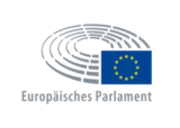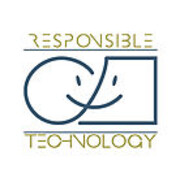Innovation for Inclusion
Assistive technologies for the inclusion of people with disabilities in society, education and employment

A key aim of the European Union is the development of an inclusive, reflective and innovative society. This aim also includes people with disabilities.
How can assistive technologies best meet the needs of the people who need and use them? An essential element of this project was to have this question answered directly by affected persons within the framework of a Europe-wide online survey. The experiences and wishes of people with disabilities have thus also been directly incorporated into the results and recommendations to decision-makers.
Introduction
Assistive technologies (ATs) - properly developed and applied - can make an important contribution to the inclusion of people with disabilities in society in general, in the education system and in the labour market. The aim of the project was to anticipate whether and how ATs could increase the inclusion of people with disabilities in Europe by 2050, but also to ask whether there are areas in which these technologies are unlikely to be conducive to inclusion. Relevant technical developments include future applications such as brain-computer interfaces, social robots or self-propelled cars as well as the targeted use of already established technologies such as smartphones.
A key task of the project carried out on behalf of STOA (The Science Technology Options Assessment Panel of the European Parliament) was to advise the European Parliament on the design of future framework conditions for the use of technologies to support people with disabilities.
Research and Development
Whether in the areas of education, employment, health or general living assistance, the importance of the development of ATs for people with disabilities will continue to grow. The definition and meaning of what an assistive technology is, is still very much contested in the academic but also political debate. Therefore, a sound foresight analysis of the state of the art as well as future trends of ATs is needed to evaluate societal and political options. These would properly address the needs of people with disabilities, are perceived as positive by this group, and thus support inclusion in Europe’s society.
Whether in the areas of education, employment, health or everyday life, the importance of the development of AT for people with disabilities will continue to increase in the future. So far, the definition of what assistive technologies are is controversial in both academic and political debate. Therefore, in addition to regulatory, health and demographic aspects, this project also comprehensively analysed the state of the art and future trends of ATs. Promoting the inclusion of people with disabilities in Europe requires social and political options that address the needs of people with disabilities and are positively perceived by affected groups.
AT for inclusion were analyzed for three different types:
- Hearing loss or impairment
- Blindness and visual impairment
- People with autism
In terms of methodology, the approach followed the scientific foresight method developed by STOA. In addition to a literature search, an online survey and expert interviews were conducted to assess the needs and perceptions of assistive technologies.
Project Outcomes
Key aspects of the project were discussed in January 2017 during a full day workshop at the European Parliament with members of parliament, experts and representatives of organisations of people with disabilities. The agenda of the workshop (PDF) "Assistive technologies for the inclusion of people with disabilities in society, education and jobs" can be downloaded.
The results of the project are presented in five sub-reports (see publications): Specific reports on regulatory, health and demographic aspects, on current and future technologies, on perspectives of affected people and experts as well as on legal, social and ethical aspects are summarised in a separate analysis report. The central statements are also visualized in a short video.
Publications
Publications
- . (2018). Inclusion through assistive technologies? ITA-Dossier no. 36en (May 2018; Authors: Johann Čas, Jaro Krieger-Lamina, Leo Capari). Wien. doi:10.1553/ita-doss-036enDOIDownloadRISENWBIB Abstract
-> People with disabilities are facing numerous challenges and barriers in their everyday lives.
-> Several socio-political initiatives have been launched so far in order to actively foster the inclusion of disabled people (in areas such as education, employment and social participation).
-> Technologies can play an important role, but full inclusion may only be achieved if additional measures are also implemented. - . (2018). Inklusion durch Innovation? ITA-Dossier Nr. 36 (Mai 2018; Autoren: Johann Čas, Jaro Krieger-Lamina, Leo Capari). Wien. doi:10.1553/ita-doss-036DOIDownloadRISENWBIB Abstract
-> Menschen mit Behinderungen sehen sich im Alltag mit zahlreichen Herausforderungen und Barrieren konfrontiert.
-> Mehrere gesellschaftspolitische Initiativen zielen darauf ab, die Inklusion von Menschen mit Behinderungen (in Bereichen wie Bildung, Beschäftigung und soziale Teilhabe) zu fördern.
-> Technologien können einen wichtigen Beitrag dazu leisten. Eine vollständige Inklusion kann jedoch nur erreicht werden, wenn auch ergänzende Maßnahmen getroffen werden. - . (2018). Assistive technologies for people with disabilities – Part IV: Legal and socio-ethical perspectives (p. 33). Brussels. doi:/10.1553/STOA-asstech-4
- . (2018). Assistive technologies for people with disabilities – Part III: Perspectives, needs and opportunities (p. 101). Brussels. doi:/10.1553/STOA-asstech-4
- . (2018). Assistive technologies for people with disabilities – Part II: Current and emerging technologies (p. 74). Brussels. doi:/10.1553/STOA-asstech-3
- . (2018). Assistive technologies for people with disabilities – Part I: Regulatory, health and demographic aspects (p. 56). Brussels. doi:/10.1553/STOA-asstech-2
- . (2018). Assistive technologies for people with disabilities – In-depth analysis (p. 20). Brussels. doi:/10.1553/STOA-asstech-1DOIWebsiteRISENWBIB Abstract
Co-authors (member of the project team): Linda Nierling, Maria João Maia, Leonhard Hennen and Gregor Wolbring (ITAS/KIT), Tanja Bratan and Piret Kukk (Fraunhofer ISI), Johann Čas, Leo Capari and Jaro Krieger-Lamina (ITA), as well as Emilio Mordini (RT).
Abstract:
Assistive technologies (ATs) are designed to improve the functional capabilities of people with disabilities. Some are relatively low-tech and very familiar, such as such as reading glasses, crutches and hearing aids. Others are more advanced, using cutting-edge science and technology, with future ATs under development that could have a huge impact on all our lives.
The focus in this study is on ATs for three specific disabilities: blindness and visual impairments, deafness and hearing impairments, and autism spectrum disorders. These three disabilities exhibit both similarities and differences in terms of their implications for ATs. A description of the regulatory environment, including international agreements and EU regulations regarding disabilities and technologies, is followed by four case studies on Germany, Hungary, Portugal and Sweden. The study includes a review of the ATs currently available and future ATs at various stages of development, and also a survey of people from each disability group, focusing upon their perspectives and needs with regard to ATs. This is supplemented by expert interviews and a stakeholder workshop.
Through this combination of primary and secondary research, several social, technical, ethical, demographic, regulatory, economic and environmental trends are identified. These are used to compile four explorative scenarios about the future of ATs, and to develop social, ethical and legal reflections on the role of current and future initiatives of the European Parliament.
The study finds that current and future ATs could have a positive impact, but identifies problems with one-size-fits-all approaches. Alone, ATs are insufficient to foster a more incl
Conference Papers/Speeches
Conference Papers/Speeches
-
06/11/2018
, Berlin
Johann Cas:
Assistive Technologien für die Inklusion
DVfR-Kongress 'Wege zur Teilhabe am Arbeitsleben'
Duration
02/2016 - 06/2017
Project team
- Johann Čas



